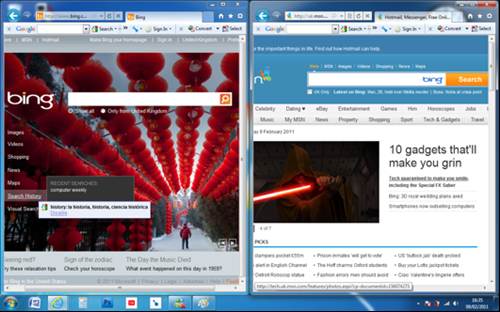Review: Internet Explorer 9 - in pictures
Drag and snap website pages and work across multiple screens
Where Microsoft has been genuinely clever in terms of giving us something new is the "tear-off" tabbed browsing function. This option allows the user to navigate between two open website pages within a single monitor screen window, which in itself is a potentially useful function for tasks such as electronic shopping or making a travel booking perhaps, where a user might want to access their bank details while spending cash. The tear-off tabs allow a user to drag a tab out of the browser, open it as a new webpage in a new window and then 'Snap' it into place for side-by-side viewing -- if you are used to the Windows 7 drag-and-snap this should be easy to master, if you're not then just grab a tab with a left click and move it to the extreme edge of the screen to see it transform. Once again, these tabs are colour coded to show which website pages are related each to other.



